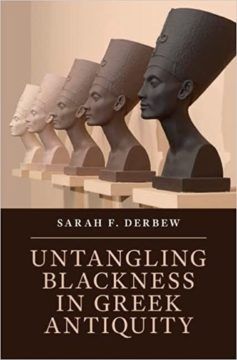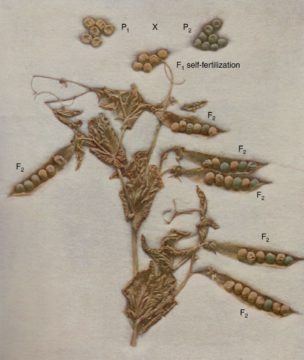Wafik El-Deiry in The Cancer Letter:
 Some, including me, may be suffering from Chronic Password Fatigue Syndrome (CPFS would be the acronym). Scientific publishing, peer review and paywalls are a very problematic area that contributes to disparities around the world, among other disparities in research and clinical oncology that I have previously pointed out. Irreproducibility of scientific results has gotten lots of attention, although real solutions have yet to address the problem. As one thinks about how we got here, it helps to have lived through the evolution and to have a foot in both medicine and science. Actually, more than a foot. What follows is opinion but maybe it will help connect some dots.
Some, including me, may be suffering from Chronic Password Fatigue Syndrome (CPFS would be the acronym). Scientific publishing, peer review and paywalls are a very problematic area that contributes to disparities around the world, among other disparities in research and clinical oncology that I have previously pointed out. Irreproducibility of scientific results has gotten lots of attention, although real solutions have yet to address the problem. As one thinks about how we got here, it helps to have lived through the evolution and to have a foot in both medicine and science. Actually, more than a foot. What follows is opinion but maybe it will help connect some dots.
In the mid- to late-1990s, HIPAA privacy rules came on the scene, due to efforts by Hillary Clinton and others. Having completed medical school in Miami, medicine and oncology training at Johns Hopkins, and having started a faculty position at University of Pennsylvania before HIPAA, I can assure anyone reading this that there was no major deluge of privacy violations.
There were some anecdotes where some nosy people looked at health records of celebrities, and there was some concern by the early- to mid-1990’s that genetic information may be used against people who would be discriminated against by employers or insurance companies. But there has been a law against genetic discrimination, and it’s a good law, separate from HIPAA. Hillary meant well, but no one anticipated the downside of HIPAA.
More here.

 It just so happens Fuller’s popular legacy is bloated, like the geodesic domes he is most easily identified with today. Alec Nevala-Lee’s new biography, Inventor of the Future, fact-checks Fuller’s legend and then corrects the record. Nevala-Lee himself discovered Fuller through the pages of the counterculture bible, Whole Earth Catalog, and grew up admiring him. But, in writing Fuller’s biography, he resists the hypnotic whirlpool surrounding Fuller. Known to be an unreliable narrator of his own life, Fuller inflated numbers, misrepresented facts, and invented stories of epiphanies and revelations. The legends and myths solidified with their countless retellings — but, really, how dare anyone doubt a sage? He lied about high school grades he never obtained, college courses never taken, daring rescues never made, and those are just the easiest to fact-check. Whenever possible, Nevala-Lee corrects Fuller as he cites him, the embellished version followed by the correct, less glamorous version. At other times, the reader is left wondering if what’s written on the page really happened.
It just so happens Fuller’s popular legacy is bloated, like the geodesic domes he is most easily identified with today. Alec Nevala-Lee’s new biography, Inventor of the Future, fact-checks Fuller’s legend and then corrects the record. Nevala-Lee himself discovered Fuller through the pages of the counterculture bible, Whole Earth Catalog, and grew up admiring him. But, in writing Fuller’s biography, he resists the hypnotic whirlpool surrounding Fuller. Known to be an unreliable narrator of his own life, Fuller inflated numbers, misrepresented facts, and invented stories of epiphanies and revelations. The legends and myths solidified with their countless retellings — but, really, how dare anyone doubt a sage? He lied about high school grades he never obtained, college courses never taken, daring rescues never made, and those are just the easiest to fact-check. Whenever possible, Nevala-Lee corrects Fuller as he cites him, the embellished version followed by the correct, less glamorous version. At other times, the reader is left wondering if what’s written on the page really happened. The idea that mutations cause cancer remains the dominant paradigm. A special issue of Nature from 2020 wrote: “Cancer is a disease of the genome, caused by a cell’s acquisition of somatic mutations in key cancer genes.” Yet over the last decade it has looked as if the juggernaut has rolled too far. It has certainly failed to deliver on its promise in terms of therapies. So why hasn’t the death rate from malignant cancer changed since 1971?
The idea that mutations cause cancer remains the dominant paradigm. A special issue of Nature from 2020 wrote: “Cancer is a disease of the genome, caused by a cell’s acquisition of somatic mutations in key cancer genes.” Yet over the last decade it has looked as if the juggernaut has rolled too far. It has certainly failed to deliver on its promise in terms of therapies. So why hasn’t the death rate from malignant cancer changed since 1971?
 In popular culture, Tudor noblewoman
In popular culture, Tudor noblewoman  You might think that the FBI search at Mar-a-Lago yesterday would provide a welcome opportunity for a Trump-weary Republican Party. This would be an entirely postpresidential scandal for Donald Trump. Unlike his two impeachments, this time any legal jeopardy is a purely personal Trump problem. Big donors and Fox News management have been trying for months to nudge the party away from Trump. Here was the perfect chance. Just say “No comment” and let justice take its course.
You might think that the FBI search at Mar-a-Lago yesterday would provide a welcome opportunity for a Trump-weary Republican Party. This would be an entirely postpresidential scandal for Donald Trump. Unlike his two impeachments, this time any legal jeopardy is a purely personal Trump problem. Big donors and Fox News management have been trying for months to nudge the party away from Trump. Here was the perfect chance. Just say “No comment” and let justice take its course. For artists, middle age is freighted with aesthetic drama. For poets, it’s also often a period of formal metamorphoses. Midlife crisis is a term too loaded with risible associations to be useful here. The transformation seems more a matter of taking inventory, the poet alighting on a doubt or an intuition and having a good look around. Evolutions during this period are frequent and substantial: the seriocomic alibi of Brazil in
For artists, middle age is freighted with aesthetic drama. For poets, it’s also often a period of formal metamorphoses. Midlife crisis is a term too loaded with risible associations to be useful here. The transformation seems more a matter of taking inventory, the poet alighting on a doubt or an intuition and having a good look around. Evolutions during this period are frequent and substantial: the seriocomic alibi of Brazil in  Derbew’s book arrives at a pivotal moment in classical studies. The past years have seen debates on the
Derbew’s book arrives at a pivotal moment in classical studies. The past years have seen debates on the  Humans, frogs and many other widely studied animals start as a single cell that immediately divides again and again into separate cells. In crickets and most other insects, initially just the cell nucleus divides, forming many nuclei that travel throughout the shared cytoplasm and only later form cellular membranes of their own. In 2019, Stefano Di Talia, a quantitative developmental biologist at Duke University,
Humans, frogs and many other widely studied animals start as a single cell that immediately divides again and again into separate cells. In crickets and most other insects, initially just the cell nucleus divides, forming many nuclei that travel throughout the shared cytoplasm and only later form cellular membranes of their own. In 2019, Stefano Di Talia, a quantitative developmental biologist at Duke University,  Some, including me, may be suffering from Chronic Password Fatigue Syndrome (CPFS would be the acronym). Scientific publishing, peer review and paywalls are a very problematic area that contributes to disparities around the world, among other
Some, including me, may be suffering from Chronic Password Fatigue Syndrome (CPFS would be the acronym). Scientific publishing, peer review and paywalls are a very problematic area that contributes to disparities around the world, among other  On April 3, 1911, Edna St. Vincent Millay took her first lover. She was 19 years old, and she engaged herself to this man with a ring that “came to me in a fortune-cake” and was “the symbol of all earthly happiness.” Millay had just graduated from high school and had taken charge of running the household while her mother worked as a traveling nurse. She fixed her younger sisters dinner, washed and mended all their clothes, and entertained their guests. Her lover had no name and no body; he was a figment she’d conjured up to help her get through the stress and loneliness of being a teenage caretaker. This first lover, her “shadow,” is not often recounted among the many others she later had, but Millay had various ways of making these exhausting days of her early adulthood endlessly charming and alive. In one note to her lover, she describes the chafing dish she served her siblings’ dinner on, which she called James, and jokes, “Why don’t you come over some evening and have something on ‘James’—doesn’t that sound dreadful—‘have something on James’!”
On April 3, 1911, Edna St. Vincent Millay took her first lover. She was 19 years old, and she engaged herself to this man with a ring that “came to me in a fortune-cake” and was “the symbol of all earthly happiness.” Millay had just graduated from high school and had taken charge of running the household while her mother worked as a traveling nurse. She fixed her younger sisters dinner, washed and mended all their clothes, and entertained their guests. Her lover had no name and no body; he was a figment she’d conjured up to help her get through the stress and loneliness of being a teenage caretaker. This first lover, her “shadow,” is not often recounted among the many others she later had, but Millay had various ways of making these exhausting days of her early adulthood endlessly charming and alive. In one note to her lover, she describes the chafing dish she served her siblings’ dinner on, which she called James, and jokes, “Why don’t you come over some evening and have something on ‘James’—doesn’t that sound dreadful—‘have something on James’!” In the U.S., public health agencies generally don’t test sewage for polio. Instead, they wait for people to show up sick in doctor’s offices or hospitals — a reactive strategy that can give this stealthy virus more time to circulate silently through the community before it is detected.
In the U.S., public health agencies generally don’t test sewage for polio. Instead, they wait for people to show up sick in doctor’s offices or hospitals — a reactive strategy that can give this stealthy virus more time to circulate silently through the community before it is detected. Many people have recognized the centrality of polarization and offered solutions for how to get out of it. Among these are: institutional changes, especially to our electoral laws, that would restructure the incentives under which politicians operate; the growth of a third, centrist party that grabs the middle ground from the extreme wings of the existing two; and grassroots movements to build moderation and understanding from the bottom up. All of these will be important components of depolarization, but none of them will be sufficient by themselves or take place soon enough to solve the problem.
Many people have recognized the centrality of polarization and offered solutions for how to get out of it. Among these are: institutional changes, especially to our electoral laws, that would restructure the incentives under which politicians operate; the growth of a third, centrist party that grabs the middle ground from the extreme wings of the existing two; and grassroots movements to build moderation and understanding from the bottom up. All of these will be important components of depolarization, but none of them will be sufficient by themselves or take place soon enough to solve the problem. I have worked in restaurants, lived on sustenance homesteads, volunteered for aquaponics and permaculture farms, and harvested at food forests from Hawaii to Texas. I invariably come home with a crate of spare cuttings and leftovers that no one else wants. My pockets are often full of uneaten complimentary bread.
I have worked in restaurants, lived on sustenance homesteads, volunteered for aquaponics and permaculture farms, and harvested at food forests from Hawaii to Texas. I invariably come home with a crate of spare cuttings and leftovers that no one else wants. My pockets are often full of uneaten complimentary bread. There are few historical records concerning Gregor Johann Mendel and his work, so theories abound concerning his motivation. These theories range from Fisher’s view that Mendel was testing a fully formed previous theory of inheritance to Olby’s view that Mendel was not interested in inheritance at all, whereas textbooks often state his motivation was to understand inheritance. In this Perspective, we review current ideas about how Mendel arrived at his discoveries and then discuss an alternative scenario based on recently discovered historical sources that support the suggestion that Mendel’s fundamental research on the inheritance of traits emerged from an applied plant breeding program. Mendel recognized the importance of the new cell theory; understanding of the formation of reproductive cells and the process of fertilization explained his segregation ratios. This interest was probably encouraged by his friendship with Johann Nave, whose untimely death preceded Mendel’s first 1865 lecture by a few months. This year is the 200th anniversary of Mendel’s birth, presenting a timely opportunity to revisit the events in his life that led him to undertake his seminal research. We review existing ideas on how Mendel made his discoveries, before presenting more recent evidence.
There are few historical records concerning Gregor Johann Mendel and his work, so theories abound concerning his motivation. These theories range from Fisher’s view that Mendel was testing a fully formed previous theory of inheritance to Olby’s view that Mendel was not interested in inheritance at all, whereas textbooks often state his motivation was to understand inheritance. In this Perspective, we review current ideas about how Mendel arrived at his discoveries and then discuss an alternative scenario based on recently discovered historical sources that support the suggestion that Mendel’s fundamental research on the inheritance of traits emerged from an applied plant breeding program. Mendel recognized the importance of the new cell theory; understanding of the formation of reproductive cells and the process of fertilization explained his segregation ratios. This interest was probably encouraged by his friendship with Johann Nave, whose untimely death preceded Mendel’s first 1865 lecture by a few months. This year is the 200th anniversary of Mendel’s birth, presenting a timely opportunity to revisit the events in his life that led him to undertake his seminal research. We review existing ideas on how Mendel made his discoveries, before presenting more recent evidence. AS SOMEONE WHO grew up in India in the early 2000s, after the once-colonized country had opened itself to the global economy, one thing was clear to me. Aspiration and English were synonymous. Both were essential. This lesson was drilled into me at my missionary-run English-medium high school in New Delhi. Whether we dreamed of becoming doctors or engineers or corporate hotshots, we were repeatedly told that we needed to have English. Students were penalized for speaking in any language other than English, and our pronunciations were disciplined in preparation for roles no one doubted we would take on. Away from the institutional ear, my peers and I still cherished our other languages, to varying degrees. But, for the most part, we learned to joke, dream, rebel, and obey in English.
AS SOMEONE WHO grew up in India in the early 2000s, after the once-colonized country had opened itself to the global economy, one thing was clear to me. Aspiration and English were synonymous. Both were essential. This lesson was drilled into me at my missionary-run English-medium high school in New Delhi. Whether we dreamed of becoming doctors or engineers or corporate hotshots, we were repeatedly told that we needed to have English. Students were penalized for speaking in any language other than English, and our pronunciations were disciplined in preparation for roles no one doubted we would take on. Away from the institutional ear, my peers and I still cherished our other languages, to varying degrees. But, for the most part, we learned to joke, dream, rebel, and obey in English.